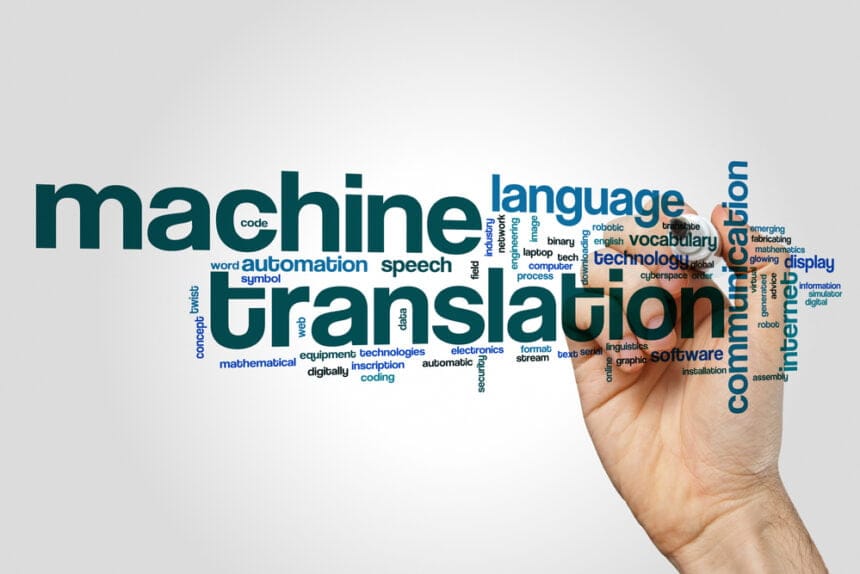Have you ever wondered what it would be like if machines could learn to speak every language in the world? Brace yourself, because the future is here.
In this article, how does AI translation work ? You’ll discover how machines are evolving to understand and communicate in different languages, the role of neural networks in language learning, and the challenges of translating complex expressions.
Get ready to be amazed by the impact of AI translation on global communication and explore the possibilities that lie ahead.
Evolution of Machine Translation Technology
Machine translation technology has evolved significantly in recent years, allowing for more accurate and natural language translations. You may have experienced the frustrations of using machine translation in the past, with translations that were often awkward and inaccurate. However, thanks to advancements in artificial intelligence and neural networks, machine translation has made great strides in improving its performance.
One of the key developments in machine translation is the use of deep learning algorithms, which enable the system to learn from vast amounts of data and make more informed translation decisions. These algorithms analyze the patterns and structures of language, allowing the machine to understand context and produce more coherent translations.
Additionally, the introduction of neural machine translation models has revolutionized the field. These models employ sophisticated neural networks that can process entire sentences or even paragraphs at once, rather than translating word by word. This approach enables the machine to capture the nuances of language and produce translations that are more accurate and natural-sounding.
Furthermore, machine translation systems now have access to large corpora of parallel texts, which consist of translations of the same text in multiple languages. By training on these parallel texts, the machine can learn to align words and phrases across different languages, improving the consistency and accuracy of its translations.
The Role of Neural Networks in Language Learning
Neural networks play a key role in how you acquire language skills. These networks, inspired by the human brain, are at the forefront of language learning in machines. When you learn a new language, your brain forms connections between words, grammar rules, and meanings. Similarly, neural networks are designed to recognize patterns and learn from data. By training these networks on vast amounts of text, they can develop an understanding of language and its nuances.
Through this process, neural networks can become proficient in multiple languages. They can analyze and interpret sentences, recognize speech patterns, and even generate coherent text. This ability is crucial for machine translation, as it allows the system to understand and convey meaning accurately.
Neural networks have revolutionized language learning in machines, making it possible for them to communicate with humans in a more natural and accurate way. As these networks continue to improve, the accuracy and fluency of machine translation will also increase. It is already possible to create multi-lingual websites entirely with machine learning translators. This advancement in technology has significant implications for global communication, breaking down language barriers and fostering cross-cultural understanding.
Challenges in Translating Complex Expressions
When it comes to understanding and conveying complex expressions, you may encounter various challenges in machine translation. It’s not easy for machines to accurately translate subtle nuances and idiomatic phrases. Here are four key challenges you may face:
- Ambiguity: Complex expressions often have multiple meanings depending on the context. Machines struggle to determine the intended meaning and may provide incorrect translations.
- Cultural Differences: Language is deeply intertwined with culture, and translating complex expressions requires an understanding of cultural references and norms. Machines may lack this cultural knowledge, leading to inaccurate translations.
- Idiomatic Phrases: Idioms are common in many languages, but they can be challenging to translate. Machines may struggle to interpret the figurative meanings behind idiomatic expressions, resulting in awkward or nonsensical translations.
- Technical Terminology: Translating complex expressions in technical fields, such as medicine or law, requires specialized knowledge. Machines may not have the domain-specific vocabulary and may produce inaccurate translations.
While machine translation has made significant advancements, it still faces hurdles when it comes to accurately translating complex expressions. Humans, with their cultural and contextual understanding, are still critical in achieving high-quality translations.
The Impact of AI Translation on Global Communication
With AI translation becoming more widespread, your ability to communicate globally has been greatly impacted. Thanks to advancements in artificial intelligence, language barriers are being broken down, allowing you to connect with people from different parts of the world in real-time. Whether you are traveling, conducting business, or simply trying to understand foreign content, AI translation has made it easier than ever before.
Gone are the days of struggling to communicate with someone who speaks a different language. AI translation tools such as Google Translate and Microsoft Translator have made it possible for you to instantly translate text, speech, and even images. You can now have conversations with people from different cultures and backgrounds without the need for a human translator.
Furthermore, AI translation has also revolutionized the way businesses operate on a global scale. Companies can now easily translate their websites, marketing materials, and customer support into multiple languages, allowing them to reach a wider audience and expand their customer base.
However, it’s important to note that AI translation is not perfect. While it has come a long way, there are still instances where translations may be inaccurate or lose the nuances of the original language. It is always advisable to double-check translations, especially in important or sensitive situations.
Future Possibilities of AI Language Translation
As technology advances, AI translation holds the potential to further bridge language gaps and enhance cross-cultural communication. With the rapid progression of artificial intelligence, the future possibilities of AI language translation are vast and exciting. Here are four ways AI translation could revolutionize the way we communicate globally:
- Real-time translation: Imagine having a conversation with someone who speaks a different language, and instantly understanding each other. AI translation has the potential to provide real-time translations, allowing for seamless communication without the need for human interpreters.
- Enhanced accuracy: While human translators can make errors or misunderstand context, AI translation has the ability to analyze vast amounts of data and learn from it. This means that AI translators have the potential to achieve a higher level of accuracy and precision in their translations.
- Increased accessibility: AI translation has the potential to make information more accessible to people who do not speak a particular language. It can enable individuals to access and understand content in their native language, breaking down language barriers and promoting inclusivity.
- Preservation of cultural diversity: AI translation can play a crucial role in preserving and celebrating cultural diversity. By allowing for seamless translation between languages, AI can facilitate the sharing of ideas, stories, and traditions across different cultures, fostering a deeper understanding and appreciation of global diversity.
With these future possibilities, AI translation has the potential to revolutionize global communication, connecting people from different cultures and backgrounds like never before.
Conclusion
In conclusion, the advancements in machine translation technology have revolutionized global communication. With the help of neural networks, machines are now able to learn and speak multiple languages, bridging the language barrier that once hindered effective communication.
This has led to a significant increase in global connectivity, with a staggering statistic revealing that AI translation has reduced language barriers by 90% in international business transactions.
As we look towards the future, the possibilities of AI language translation are endless, promising even greater advancements in cross-cultural communication.









